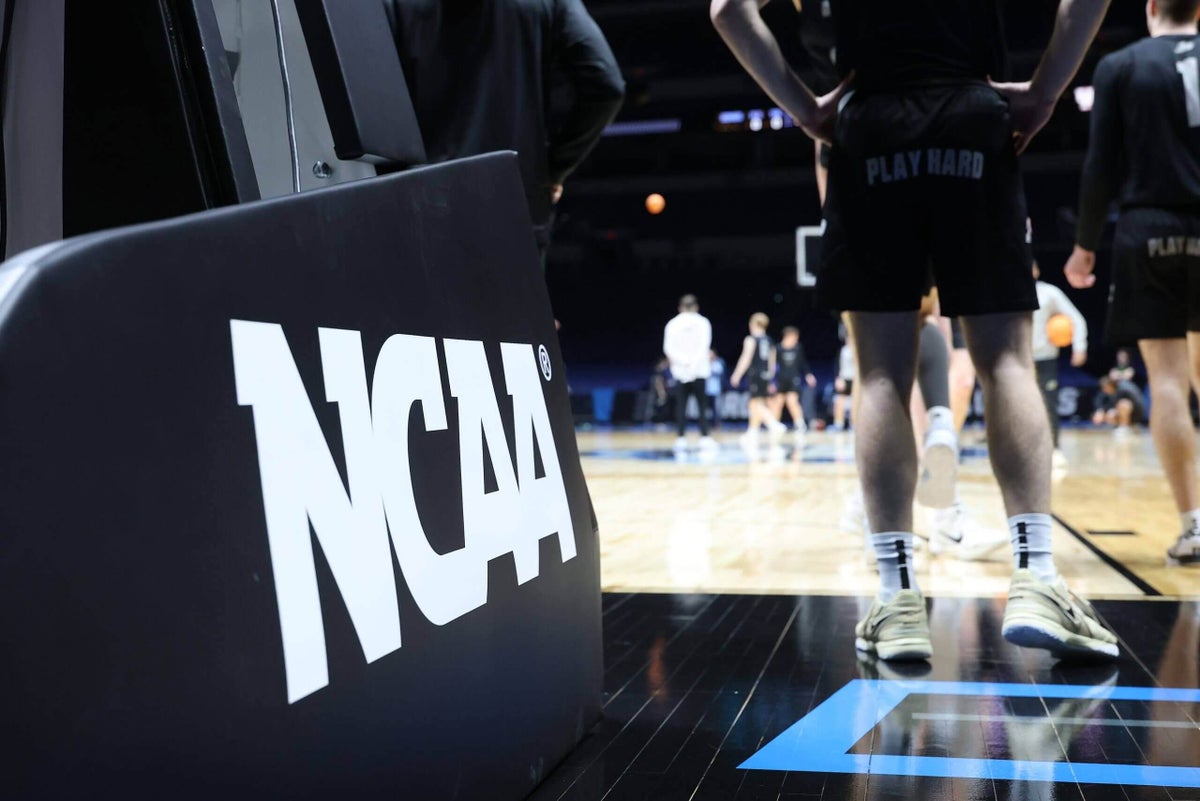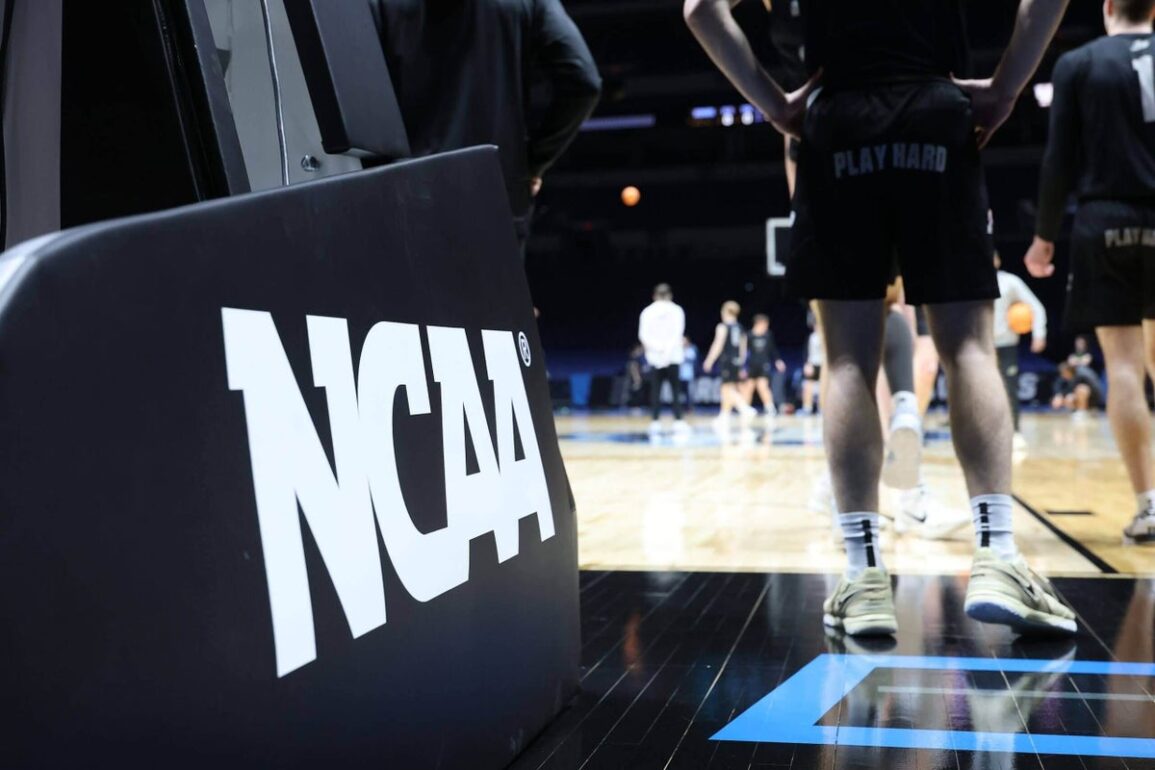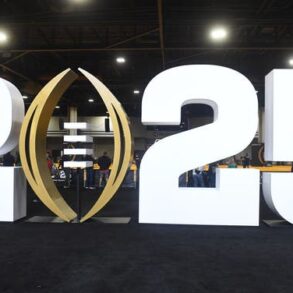
College sports are at an inflection point.
Approval of the long-awaited House v. NCAA settlement was finally granted on Friday, a decision set to reshape the future of college sports. And yet, so much of the industry’s future is still pinned to Congress and the hopes of federal legislation, all while private equity and “super league” models circle overhead. President Donald Trump recently considered a commission that would explore the issues facing the NCAA and college athletics, with Nick Saban expected to be involved.
Advertisement
An enterprise that has long had too many cooks in the kitchen now has all three branches of government and outside financing getting involved. (Wherefore art thou “stick to sports” crowd?) That’s on top of the current power struggle over the future of the College Football Playoff, and the expanding competitive gap between the power conferences and everyone else. All of it underscores just how fractured and dysfunctional college athletics have become, with no quick fixes in sight.
But for as dire as all of this might seem, it’s not a death rattle, either. College sports are broken and in desperate need of reform. And college sports will be just fine.
For too long the NCAA was trapped in amber, still trying to operate as a singular, all-encompassing, amateur production, while its most prominent sports and conferences leaned further into a big-money, professionalized business model. Prior court rulings and allowing athletes to earn name, image and likeness (NIL) compensation have chipped away at the old notion, but only after the NCAA got dragged along, kicking and screaming. The organization consistently opted for incremental half measures over effective reform, which is how we swung from full-ride athletic scholarships feeling grossly insufficient to the guardrails getting ripped off via lawless, pay-for-play NIL deals.
Yet college sports keep hanging tough, resilient through change and mismanagement.
The House settlement is the latest example, a $2.8 billion agreement that peels away at the last remaining vestiges of amateurism in collegiate athletics by allowing schools to directly pay athletes, yet fails to solve the industry’s biggest underlying issue: The NCAA is still ripe for litigation.
To be fair, the House settlement is an attempt to find that Goldilocks solution to athlete compensation, as well as revamp the broader governance of college athletics. It improves the status quo, most notably because more athletes will receive a bigger cut of the billions in revenue dollars that college sports generate. It also reflects a shift in posture by the NCAA since Charlie Baker took the reins from Mark Emmert as NCAA president in 2023, and the growing influence of the power conferences. Rather than risking more legal defeats (and financial ruin), the NCAA opted for compromise, bundling a trio of high-profile antitrust lawsuits into one agreement and footing a multi-billion-dollar bill.
Advertisement
Except it doesn’t change the fact that the NCAA and power conferences are still trying to live in two worlds at once — the old and the new — a luxury that even this pricey settlement can’t buy. There are still questions about years of eligibility, collective bargaining, athlete employment status, conflicting state laws, Title IX, third-party NIL deals, and the likelihood of Congressional intervening on any of it. Unless Congress or this presidential commission — which is currently on pause — can drum up some legislative action in relatively short order, the House settlement does little to stop the onslaught of legal challenges that have kneecapped the NCAA’s authority, again and again.
“The House settlement started with the goal of the NCAA putting an end to the losses it has taken in these litigations all over the country,” Cal Stein, a sports law lawyer, said in an interview with The Athletic earlier this year. “But the great irony is that it’s really just going to lead to more lawsuits.”
This lack of harmony plagues college sports beyond the courtrooms, too. Yes, revenues keep climbing, and that money is a direct result of the continued popularity. But don’t mistake it to mean every development has been fan friendly. Dollar signs also funded the Great Consolidation of conference realignment and power conference autonomy, dismantling so much of the regionality and tradition that makes college sports special. As fans continue to suffer lost rivalries and increasingly transient rosters (and whatever happens with the Playoff), it’s reasonable to argue that enthusiasm has dipped as a result, at least in some corners.
But what is unassailable, by any modern cultural standard, is that college sports remain extremely popular, warts and all. College football is the second most-watched sport in America behind the NFL. Men’s basketball recently had its best TV audience since 2017 for a Final Four, featuring four No. 1 seeds from power conferences. Women’s basketball has experienced exponential growth in the past few years. Nebraska women’s volleyball filled a football stadium with 92,000 fans in 2023, breaking the world record for attendance of a women’s sports event. Stanford softball set the sport’s all-time attendance record this season.
Times change. College sports plow on.
There’s more change ahead. What a much-needed reset actually looks like for the industry is up for debate, and competing voices can haggle over how to best restructure college sports and what role the NCAA should serve. But the House settlement required years of mountain-moving negotiations and billions of dollars in restitution that will totally upend the industry — only to reiterate more is needed.
Advertisement
“(The settlement is) not the end of the story,” SEC commissioner Greg Sankey said during a recent panel discussion. “It is a chapter. It’s a necessary chapter.”
That’s a nice way of saying the current Frankenstein approach isn’t gonna cut it, and is merely delaying the inevitable.
Until then, history tells us to expect more of the same resiliency from college sports in this post-settlement era … or if the College Football Playoff expands (again) to 16 teams … or if the NCAA Tournament expands to 76 teams … or if the President invokes an executive order … or if some version of the power conferences break away in football to form a super league.
One of the few constants in college sports is the ability to prosper in spite of themselves. Though it would be nice if that didn’t always have to be the case.
(Photo: Andy Lyons / Getty Images)
This post was originally published on this site be sure to check out more of their content.







